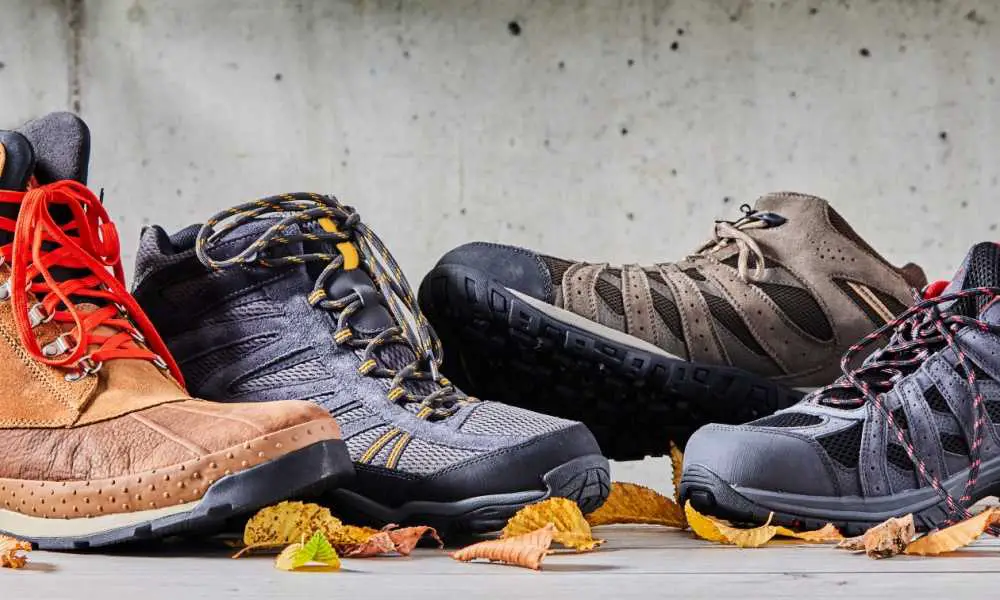Do Hiking Boots Stretch?

Whether you’re leisurely strolling across a flat surface or attempting to cross more treacherous territory, you are trusting your hiking boots with your life.
For that reason, it is essential that you get yourself a quality pair of hiking boots that fit as hiking boots are supposed to fit. But how exactly is a hiking boot supposed to fit?
How much movement can you expect to have when wearing a hiking boot? Do hiking boots stretch or will yours remain the same shape from your first hike to your last? These are the questions we’re hoping to answer today.
How is a hiking boot supposed to fit?
The fit of a hiking boot does not come down to the personal preference of the wearer. A hiking boot will not be able to provide the stability and comfort expected of it if it is not properly fitted. But what is proper fitting for a hiking boot?

A hiking boot should be snug in virtually all areas, clinging to the foot of the wearer with its tongue pressed against the ankle. Inside the boot, the wearer should have enough room to wiggle their toes. If you’re unable to wiggle your toes once your hiking boots have been fully fastened, you can assume that they are too small and unsafe to hike in. It is important to remember that hiking boots generally don’t fit as normal shoes do, so you should avoid purchasing a pair in the size that you would normally buy.
More often than not, hiking boots run small. If you are purchasing your boots online as opposed to in-store, you obviously will not have the opportunity to try them on before spending money on them. For that reason, we advise all hikers who choose to buy their boots online to read the customer reviews of any pair they consider purchasing in order to determine if the boots in question run small and, if so, by how much.
How much movement can I expect?
Regardless of the manufacturer or additional features of your boots, you can expect to be able to wiggle your toes once they have been fully fastened if they fit correctly. However, further movement will vary from boot to boot. Some boots offer greater flexibility than others, with those intended to be worn in warmer weather generally granting the wearer greater flexibility than boots intended to be worn during the winter months.
Many hiking boots come fitted with a steel shank, which has its pros and its cons. On the plus side, a steel shank provides enhanced support, which makes it particularly alluring to those who hike long distances with any degree of frequency. A significant drawback of steel shanks, however, is that they greatly restrict the wearer’s range of motion, which is far from ideal if you are trying to navigate an uneven terrain which calls for careful positioning of your feet.

For this reason, many hikers choose hiking boots with nylon shanks. While a nylon shank does not offer quite as much support as a steel shank, it does grant the wearer superior flexibility, allowing them to contort their foot as necessary to safely complete his or her hike. Purchase a pair of boots with nylon shanks and you can expect significantly more movement than a pair with steel alternatives.
Do hiking boots stretch?
If you have just purchased a pair of hiking boots that feel a little on the tight side but not so tight that you could justify returning them for a larger size, you may be wondering if you can expect them to stretch to match the shape of your foot over time.
While a pair of hiking boots may expand ever so slightly over the course of a few hikes, this expansion is so finite that it hardly seems accurate to refer to it as “stretching.”
That being said, you can expect the footbed of your boot to compress after a couple of hikes, as will several other interior components. Once this has happened, you will likely have all the room you need to wiggle your toes even when your boots have been fully fastened. If you find your boots are still too tight even after a couple of outings, you will have to attempt to return them for a larger size.
Unfortunately, obtaining a refund or replacement may prove a challenge once your boots have been worn, which makes waiting for a tight pair of boots to expand a risky game.
